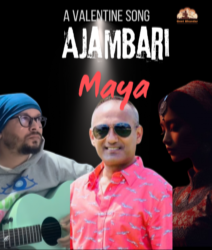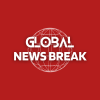Bhutan, a small country in the mountains, is a place of beauty, culture, and bliss. I had the chance to visit it after 20 years and I was amazed by what I saw and experienced. In this blog, I will share with you some of the highlights of my trip.
Thimphu, the capital of Bhutan, is a city that defies expectations. Nestled in the heart of the Himalayas, it offers a unique blend of tradition and modernity, of spirituality and urbanity, of tranquility and vibrancy. In this article, we will explore some of the captivating facts that distinguish Thimphu from other capitals worldwide.
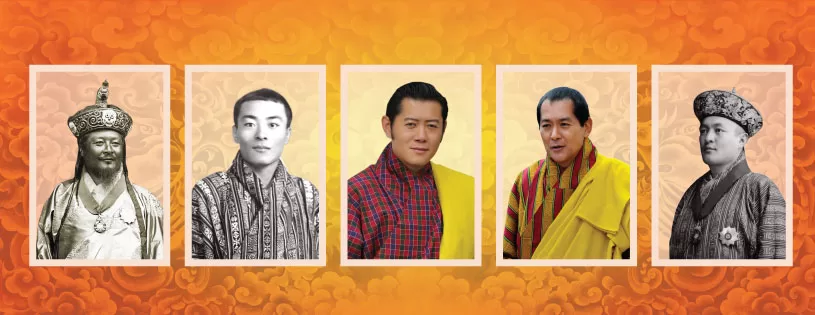
Elevated Living: The 5th Highest Capital
Thimphu proudly stands as the fifth highest capital globally, perched at 2,334 meters above sea level. Surpassing breath-taking altitudes, this city offers a unique perspective on life in the clouds. The air is crisp and fresh, the views are spectacular, and the climate is pleasant throughout the year. Thimphu is a perfect destination for those who seek adventure and inspiration.
Size Doesn’t Matter: Bhutan’s Largest City
Despite being smaller than some global counterparts, Thimphu reigns supreme as Bhutan’s largest city, boasting a land area of 26.1 sq km. A city that emphasizes quality over quantity, it exhibits a distinctive charm. Thimphu is home to a variety of attractions, such as the National Memorial Chorten, the Folk Heritage Museum, the Clock Tower Square, and the Centenary Farmers’ Market. The city also hosts several festivals, such as the Thimphu Tshechu, the Thimphu Dromchoe, and the Thimphu Flower Exhibition, that showcase the rich culture and heritage of Bhutan.
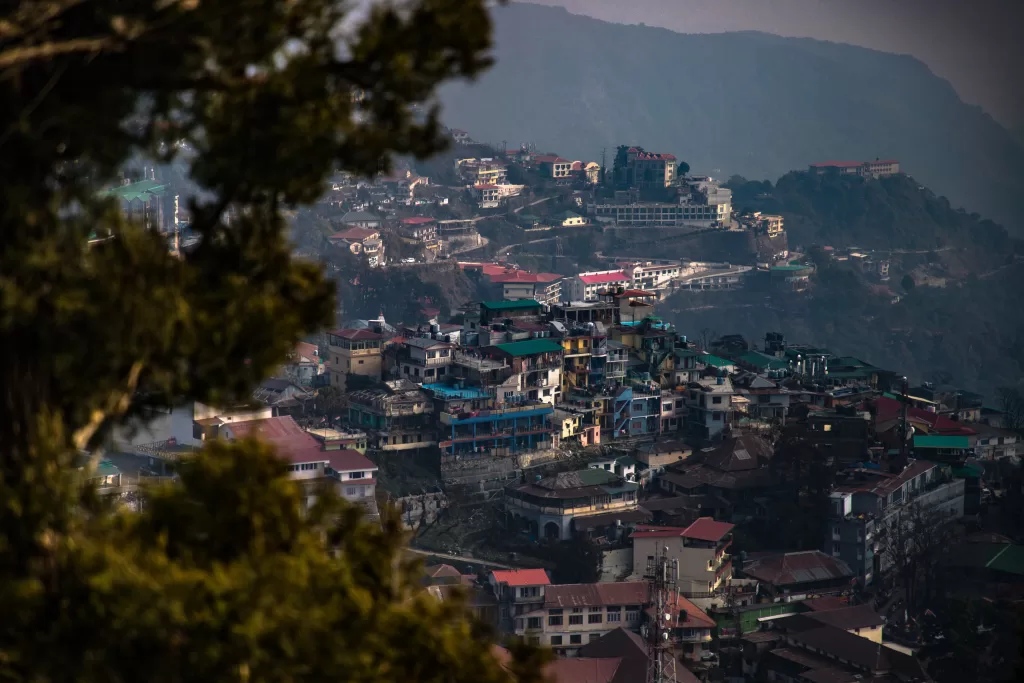
Community in the Capital: 100,000 Residents
Around 100,000 residents call Thimphu home, a mere fraction of Bhutan’s overall population. This makes the capital a vibrant hub, where urban life and Bhutanese culture converge. Thimphu is a melting pot of diverse ethnic groups, languages, religions, and lifestyles. The city is also a place of harmony and happiness, as reflected by Bhutan’s unique philosophy of Gross National Happiness, which measures the well-being of its people based on four pillars: sustainable development, environmental conservation, cultural preservation, and good governance.

Heart of Bhutan: Political and Economic Hub
Thimphu isn’t just a city; it’s the pulsating heart of Bhutan. Serving as the epicenter for commerce, religion, and governance, the city hosts the royal family, and the iconic Thimphu fortress stands as a testament to its historical significance. The fortress, also known as the Tashichho Dzong, is the seat of the government and the monastic body. It is also the venue for the coronation of the kings and the annual tsechu. Thimphu is also the center of innovation and entrepreneurship, with several startups, NGOs, and media outlets operating in the city.
Traffic Tales: No Lights, No Problem
Thimphu breaks the mold as one of the world’s few capitals without traffic lights. Embracing a human-powered approach to traffic control, the town’s “human traffic light” becomes a unique focal point and a testament to Bhutan’s distinctive charm. The traffic policeman, dressed in a traditional gho, directs the traffic with his white gloves and a whistle, adding a touch of flair and personality to the city. The traffic light experiment was short-lived, as the residents preferred the human touch over the mechanical device.

Buddha’s Abode: Home to a Giant Buddha Statue
The Buddha Dordenma Statue, towering at 51.5 meters, graces the Thimphu skyline. More than a monumental figure, it encapsulates prophecies and centuries-old teachings, adding a spiritual dimension to the city. The statue, made of bronze and gilded in gold, depicts the Buddha Shakyamuni in a meditative posture. It is also a repository of 125,000 smaller Buddha statues, each of which, like the Buddha Dordenma itself, are made of bronze and gilded. The statue fulfills an ancient prophecy dating back to the 8th century A.D that was discovered by Terton Pema Lingpa (Religious Treasure Discoverer) and is said to emanate an aura of peace and happiness to the entire world.
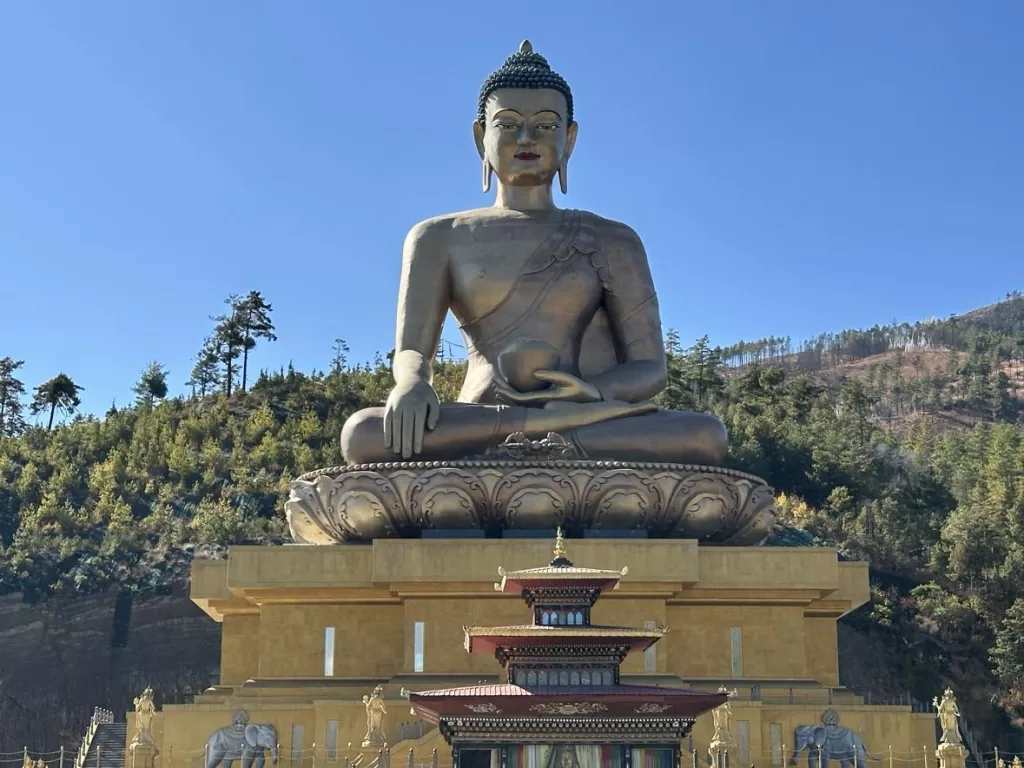
Literary Legacy: World’s Largest Published Book
Thimphu houses one of the world’s largest published books, a testament to its commitment to culture and education. Michael Hawley’s photography book, a colossal creation, stands as a unique piece of Bhutan’s literary heritage. The book, titled Bhutan: A Visual Odyssey Across the Last Himalayan Kingdom, measures 1.52 x 2.13 meters and weighs 133 pounds. It contains 112 pages of stunning photographs and essays that capture the essence of Bhutan’s landscape, culture, and people. The book is displayed at the National Library of Bhutan, where visitors can marvel at its size and beauty.
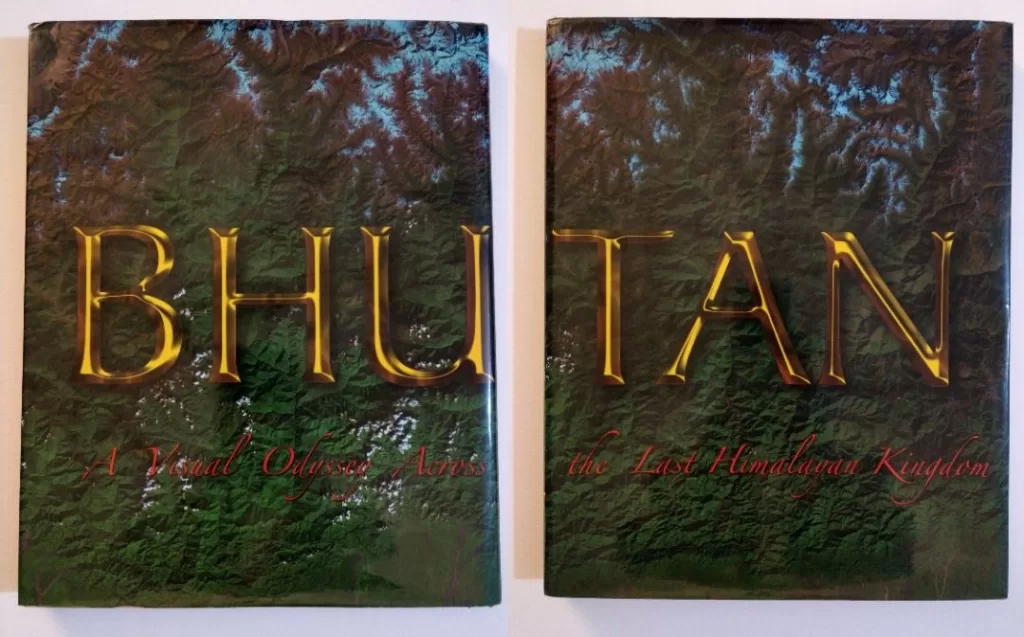
Local Cinema Vibes: Bhutanese Films Only
Thimphu’s cinemas offer a distinctive experience by exclusively screening local Bhutanese films. While lacking foreign blockbusters, this approach ensures a celebration of indigenous talent and storytelling. Bhutanese films, mostly produced in the national language of Dzongkha, reflect the social and cultural realities of the country, as well as its aspirations and challenges. Some of the popular genres include comedy, romance, drama, and thriller. Some of the acclaimed films include Travellers and Magicians, Hema Hema: Sing Me a Song While I Wait, and Lunana: A Yak in the Classroom.
Café Culture in the Clouds: A Rising Trend
Café hopping has found a niche in Thimphu, with establishments like Ambient Cafe leading the way. As coffee culture takes root, locals and tourists alike converge to savor the brew and ambiance. Thimphu’s cafes offer a variety of coffee options, from espresso to cappuccino, as well as snacks, desserts, and meals. The cafes also serve as social spaces, where people can meet, chat, work, or relax. Some of the popular cafes in Thimphu include Art Café, The Zone, Karma’s Coffee, and Café Bhutan.
Nightlife Surprises: Beyond Tradition
Contrary to expectations, Thimphu’s nightlife pulses with energy. From Mojo Park’s live music to clubs like Space 34 and Viva City, the city offers diverse nocturnal experiences, challenging preconceptions about Bhutan’s traditional image. Thimphu’s nightlife caters to different tastes and preferences, from rock to hip hop, from karaoke to DJ, from cocktails to mocktails. The nightlife scene also reflects the changing dynamics of the city, as more young people seek entertainment and socialization.
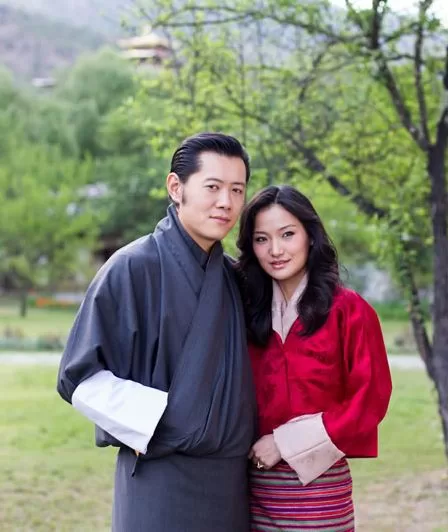
Conclusion
Thimphu, with its lofty altitudes and rich cultural tapestry, stands as a captivating destination. Beyond its scenic beauty, the city reveals a vibrant urban life, seamlessly blending tradition with modernity, making it a jewel in Bhutan’s crown. Whether you are looking for adventure, culture, or relaxation, Thimphu has something for everyone. Come and discover the wonders of this city for yourself.
Freelance Writer


